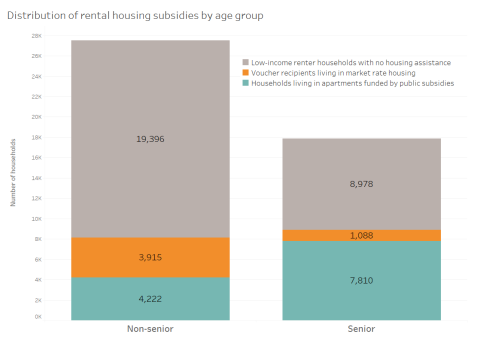Roughly 9,000 Vermont senior households receive some form of financial rental help compared to 8,000 younger households, according to a report recently completed by VHFA on the distribution of rental subsidies by age group.

As the allocating agency for scarce federal and state funds for developing affordable rental housing, VHFA conducted an analysis comparing Vermont seniors’ access to subsidized rental housing to that of younger Vermonters. The report estimates that nearly 50% of income-eligible Vermont renter households aged 55 and up are currently accessing some form of federal- or state-provided rental support, relative to 30% among younger households.
Housing assistance is provided to low-income Vermont renters in several ways. The most common way is via an apartment with below market rate rent developed through a public program, such as the Low-Income Housing Tax Credit or HUD’s Public Housing program.
About half of the apartments already developed through these programs are restricted to seniors and the other half are available to Vermonters of any age. VHFA conducted this study in part to assess how many additional apartments made affordable through public subsides should be available exclusively to seniors (rather than to renters of all ages).
Housing vouchers are another type of assistance that can be used by seniors and non-seniors in a variety of types of rental housing.
The number of seniors living in Vermont is increasing each year and likely to peak in 2030. Between now and then, approximately 3,000 low-income renter households are likely to age from the non-senior to senior population group. However, the total number of all low-income renters is not expected to increase during this time. Despite the modest increase in senior households, it is unlikely that demand for affordable apartments restricted to seniors will outweigh demand for apartments available to Vermonters of all ages.


